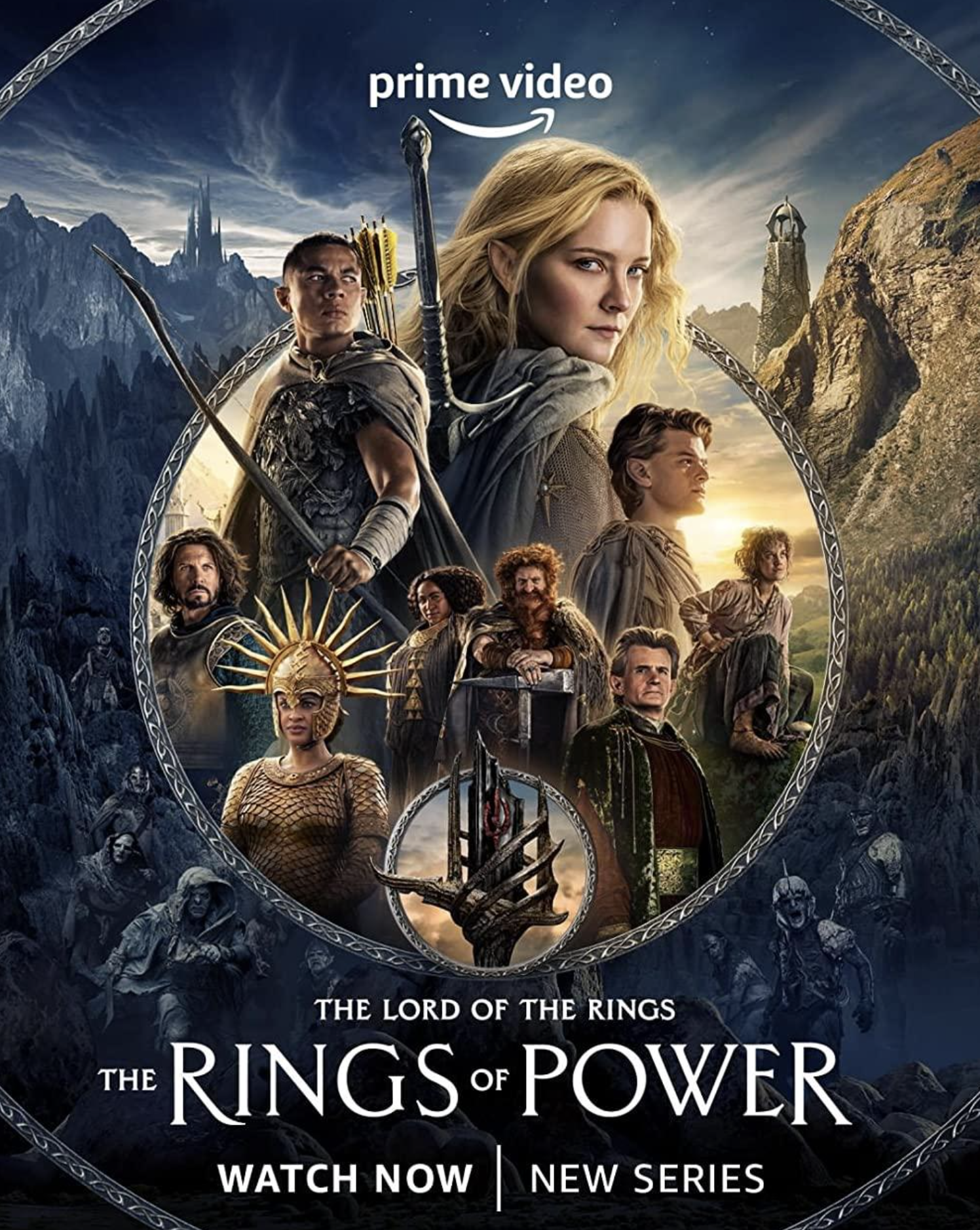The Rings of Power - Season One Review
By Conor Esslemont
When Amazon first announced it was making a The Lord of the Rings prequel series, expectations were lofty, and skepticism perhaps even loftier. In response to this, the studio wasn’t quiet in offering updates and details about the project, announcing that the first season cost a record-breaking $715 million dollars to produce, with some $250 million for the rights to the series alone.
Set during the Second Age, five-thousand years before the events of the original LotR series, the show focuses on a host of characters, some of which come directly from the Tolkien source material, and others invented by showrunners Patrick McKay and J.D. Payne. Fans of the original films and books will recognize the names of Galadriel, Elrond, and Isildur, while the show introduces other adapted Tolkien characters such as Celebrimbor and Gil-Galad.
Purists of the original source material will find plenty to critique, as much is changed in order to suit the show’s narrative. Sauron’s role as Annatar the Lord of Gifts from Tolkien’s The Silmarillion is discarded in favor of an original storyline, and the events of the Second Age have been largely condensed. While this, and the many new characters, has been a point of criticism from Tolkien purists, it has similarly allowed the show to create its own stories, to mixed effect. The online theorizing surrounding the show was surely a big selling point in allowing for these changes, though; discussions around the identity of Sauron, the Stranger, and the role of the black sword went on for weeks during the show’s eight episode run.
The Rings of Power begins with the fittingly epic backstory of the War of Wrath against Morgoth that ended the First Age. So, with Sauron’s disappearance after the war, we follow a young Galadriel on her quest to locate him –a relentless quest that has far exceeded her mandate.
Elsewhere, the Elf Arondir discovers an impending threat to the kingless Southlands, while Elrond is charged with building an alliance with the Dwarves of Khazad-dûm. We also meet the nomadic Harfoots: small, Hobbit-like folk who encounter a man known as the Stranger after he falls from the sky. All of these storylines are introduced in the geographically sprawling first episode, and as the show progresses, they interweave with the introduction of new characters. Yet, the story never seems to gain real traction, slowly building the anticipation while plot developments are few and far between.
Keeping track of these distinct stories is easy enough, but the short time spent on each slows the show’s momentum and reduces interest in these individual journeys. In a series where the characters’ names can be a challenge in and of themselves, the quick visits to each character do little to endear them to the audience. This problem is exacerbated by flat writing, causing many of the side characters to be forgettable and indistinguishable. Even Galadriel, despite being the series lead, remains frustratingly one-note and undeveloped as the show trudges on. In contrast, the show’s MVP award goes to Elrond and Prince Durin, whose friendship is arguably the most amiable and refreshing part of the series, helped in no small part by Robert Aramayo and Owain Arthur’s heartwarming performances of the characters.
So, where did that $715 million dollar budget go? Spectacle. The Rings of Power is as aesthetically gorgeous a show as anyone could wish for, with dazzling visuals and an endless supply of establishing shots that would be perfect for desktop backgrounds. Bear McCreary’s score is truly sweeping and heartfelt, and one of the best things to come from the series. However, with a price tag of $60 million per episode, The Rings of Power does less with more, especially when compared to its fantasy contemporaries (e.g. Netflix’s The Witcher and HBO’s The House of the Dragon). The lackluster writing and hollow characters throughout undermine the fantastic visuals, solid action, and even the classic source material. Perhaps season two will forge some of the special magic we’ve been looking for.


